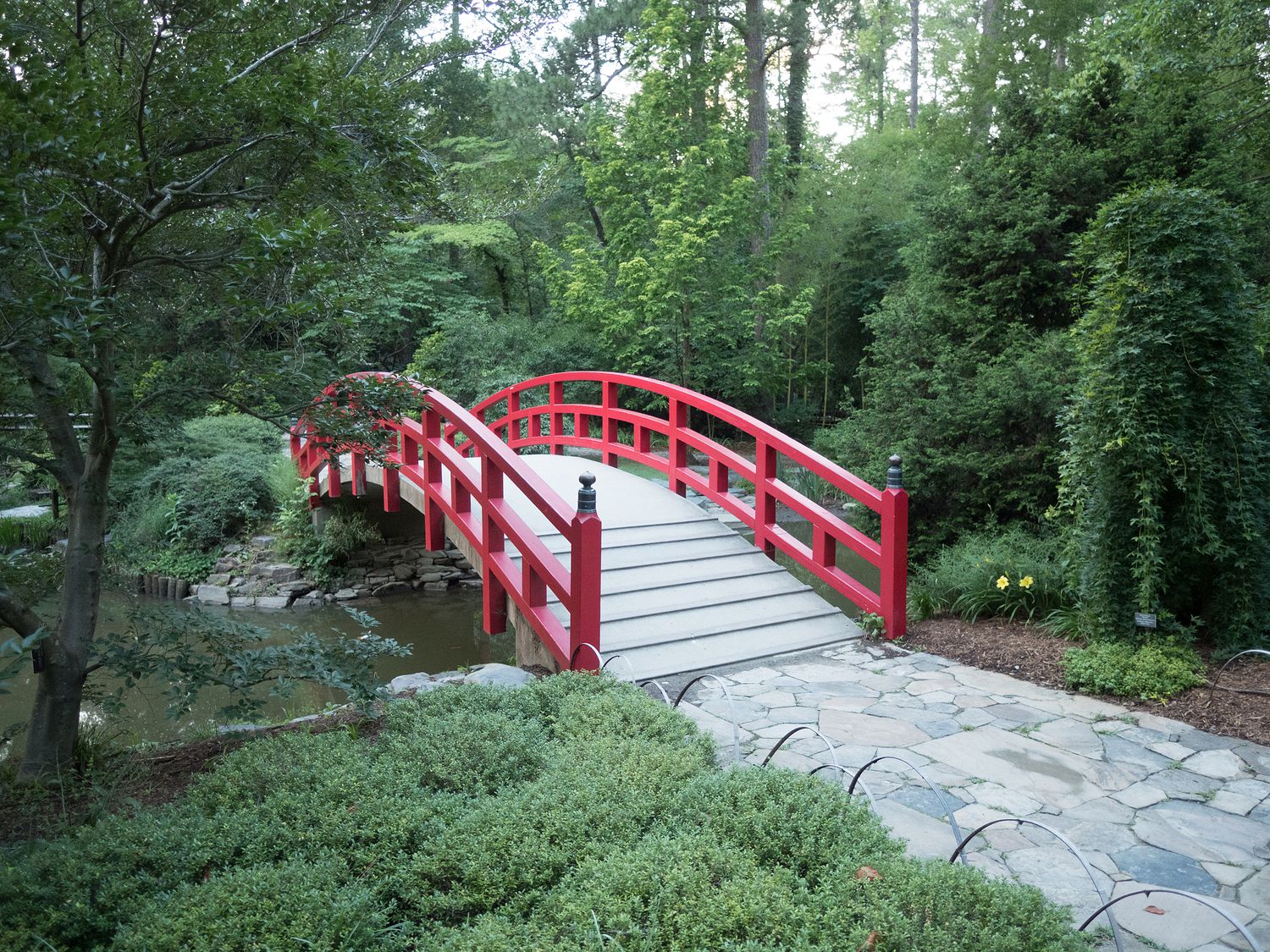– Ocean City, Maryland to Durham, North Carolina –
Today was not Ripley’s day. Don’t worry, she didn’t get hurt or anything, she just wasn’t popular with certain locations. I was a little disappointed with today, myself.
We got up at 5am today because we were meeting with one of Mark’s friends in North Carolina this evening, and we wanted to have plenty of time to visit Chincoteague and Assateague islands before we had to hurry on down the road. So, it’s 5am, and we are going for a run, and one of the few even remotely decent places to run on this overly-touristy little island is the boardwalk.
We took Ripley out and ran all the way to the end of the boardwalk (2.5 miles), where we ran into a bicycle police officer, who told us that dogs aren’t allowed on the boardwalk in the summer. That’s fine, I would’ve understood that- but they didn’t have any signs indicating that at all. In fact, I didn’t see any signs about much of anything on the boardwalk other than signs requesting that we please buy their crap. The officer told me since we had to run all the way back to the other end, we could go ahead, especially since it was so early in the morning.
But his colleague wasn’t having that. Perhaps five minutes after we’d turned back, we ran into another cop, who decided that the other cop was wrong, and that he would get complaints(?) about Ripley being on the boardwalk (before 6am). He wasn’t having any discussion on the matter, despite what his colleague had said. He seemed to take pleasure in removing us, in fact. I offered to run on the beach instead, and he told me that was against the rules as well. So, we ended up running on the side of the road to get back to our hotel. Ripley (at my encouragement) pooped on their lame city (I picked it up like a responsible person, but still). I doubt we will be back. Way to make things difficult for the thousands of tourists that come to your city every year- don’t put up signs and have different rules depending on who you talk to. Fun times.
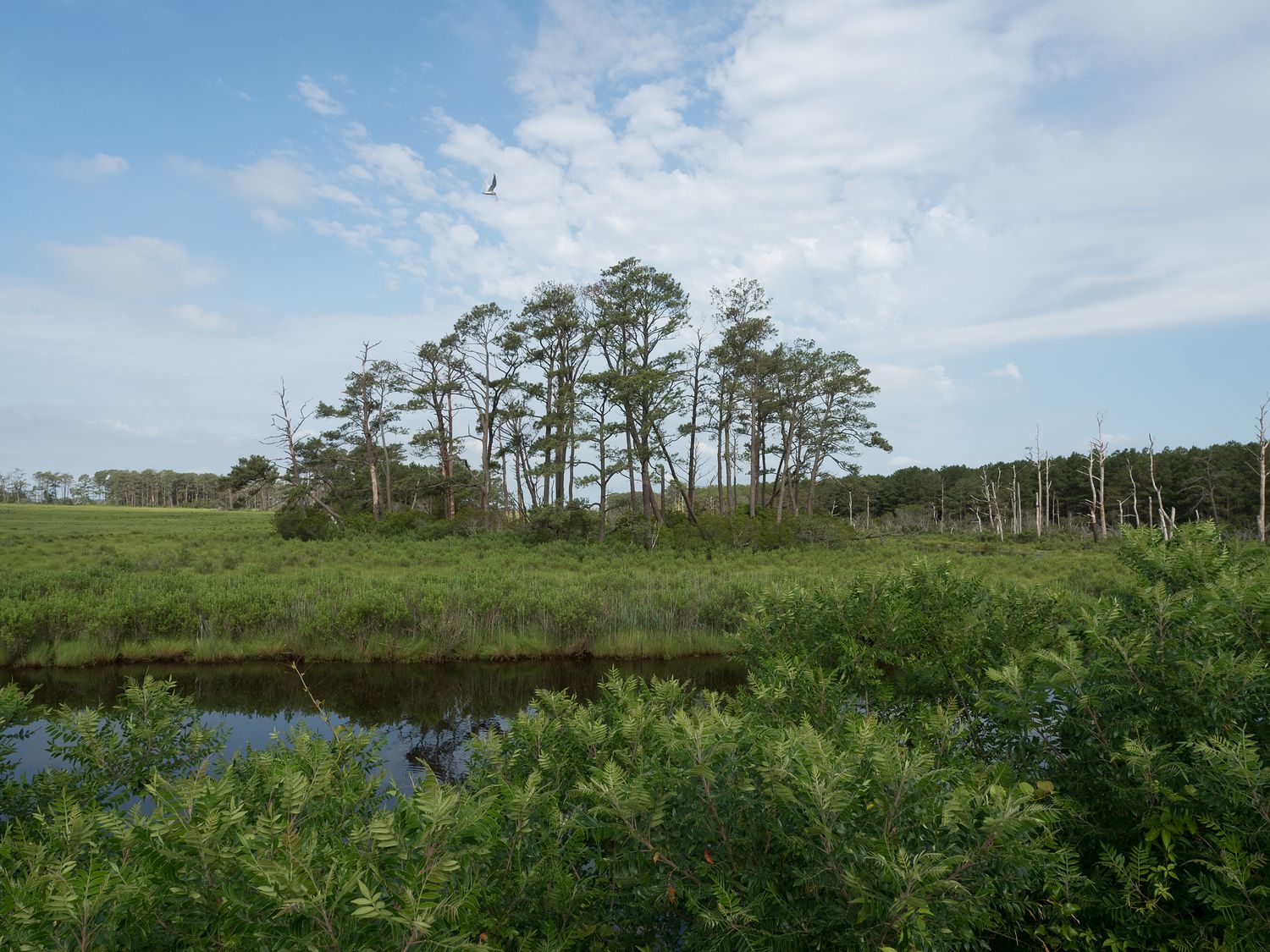
I know that it may seem like my irritation at the place is coloring my opinion, but I wouldn’t have gone back there anyway. It reminds me in some ways of South Padre Island back home in Texas. Everyone there is a tourist, all of the stuff there is geared towards the worst kind of visitors, and the city itself is very dirty. Everything was too expensive for what it was, and there are much prettier beaches just a few miles down the road. If you’re ever thinking of visiting the area, pick a better beach. You can find a nicer, quieter place half an hour away. Even the locals say so.
We were still out of there pretty early, despite the delay, and it was only an hour or so drive down to Chincoteague Island, in Virginia. Have you ever heard of it? I think most little girls born after the 1940s come across the book Misty of Chincoteague, which tells a fictionalized account of the story of a pony born on Assateague Island. Assateague has several herds of feral horses, a national seashore, a state park, and a wildlife refuge. The island is only 37 miles long. The feral horses (colloquially called ‘wild’) are referred to as Chincoteague Ponies, or Assateague horses, although they are technically ponies.
Now I’ve used two terms that may be unclear to people unfamiliar with horses, so I’ll explain them a bit before I tell you more about the island. First, let’s talk about feral vs. wild horses. The only wild horse breed left in existence is the Przewalski’s horse. That breed of horse has never been domesticated. Feral horses on the other hand (like the Brumby and the Mustang), are horses that were once domesticated and have adapted to life in the wild without human support. They domestication is sometimes centuries in the past, but these horses originate from horses owned and bred by humans.
The other term I’d like to talk about is “pony.” For whatever reason, a lot of people think a pony is a baby horse (actually called a foal), or just a small horse. Actually ponies are physically different from horses- they have thicker, stockier bodies, heavier coats and hair, bigger heads, and proportionally shorter legs. Sometimes the word is also used to simply denote a size difference, however, which can create confusion. In many horse breed registries, a pony is any horse short than 14.2 hands (a hand is four inches). These are actually just small horses, phenotypically-speaking. That’s why some horses under that size (say, the Icelandic Horse) are still considered horses. Their body type is more consistent with a horse than with a pony, despite their short statue. Clear as mud, right?
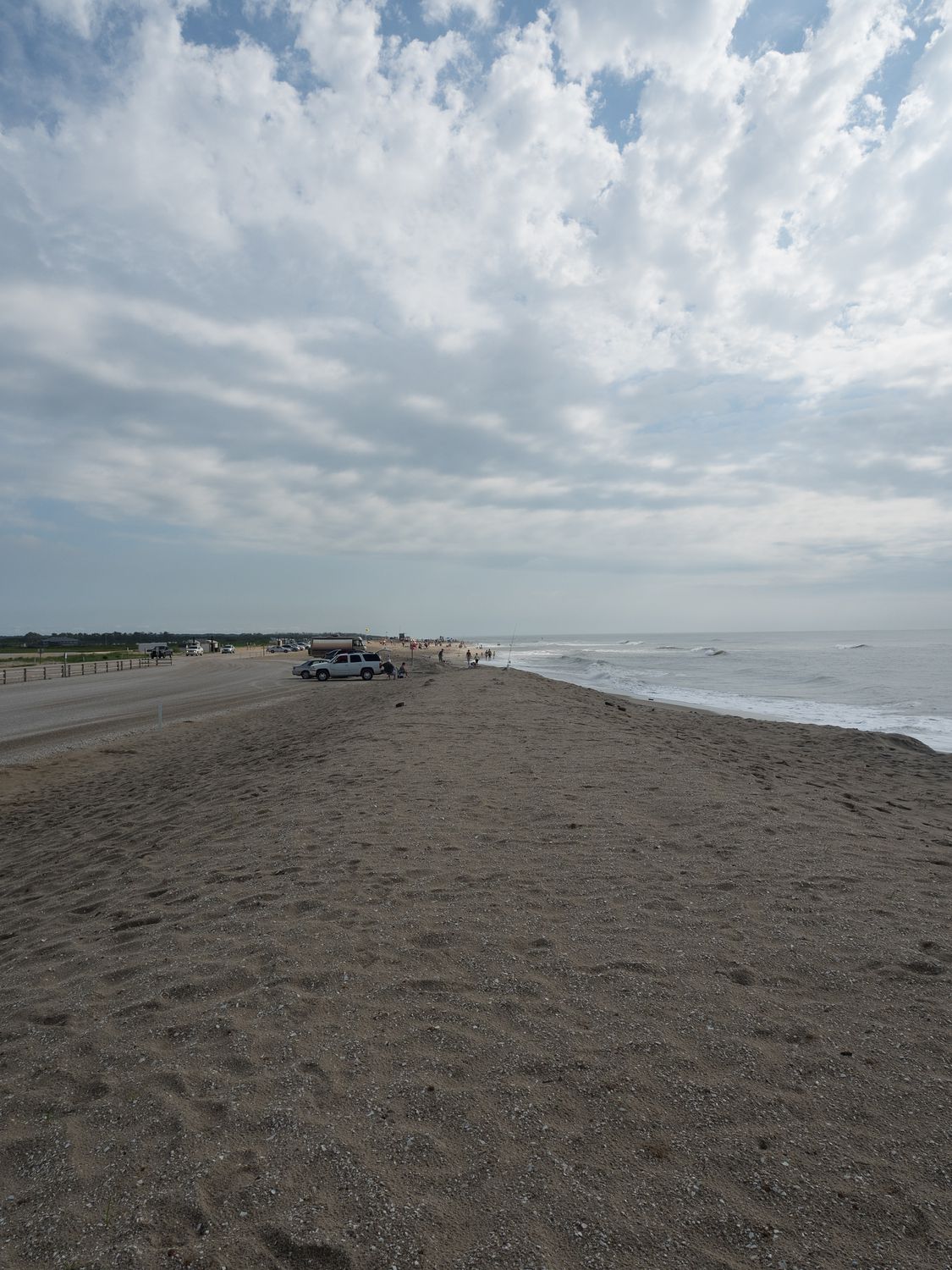
In any event, Assateague and Chincoteague are famous for their annual Pony Penning event, which is held every summer by Chincoteague’s Volunteer Fire Department. All of the feral ponies live on Assateague Island, so every summer, the ponies are herded up and forced to swim across the channel between the two islands during low tide. The ponies are then penned up, and the foals (and some of the adults) are auctioned off to raise money for the fire department, and to keep the pony population small enough for the island to support. Misty of Chincoteague is about the auction of one specific foal in the 1940s. The foal actually existed, although the story is dramatized for the children’s book. In fact, I’ve read that Misty and one of her offspring were stuffed after they passed, and you can see them somewhere on Chincoteague Island. I’ve seen enough taxidermied horses to last my lifetime though. That’s Phar Lap, by the way. He was a very famous Australian thoroughbred racehorse. Stories say he was basically assassinated via arsenic poisoning, although that’s never been proven. I’ll get back to the subject at hand, however.
I was very excited to visit Chincoteague and Assateague, as you can imagine (since I’m clearly a horse person). Unfortunately, it was not to be. As we were driving into the park, we discovered that dogs are not allowed on Assateague Island, even in your vehicle. I can understand not wanting the dogs out of a vehicle in a wildlife refuge, but I’ll admit I was a little surprised that they weren’t allowed in your vehicle, either. I suspect the reason for that particular rule involves the beaches. If your dog was allowed in your car, but not outside, people might leave their dogs in the car while they went to the beach, which is obviously dangerous for the dog. I can only speculate, though, since the sign didn’t explain. This is only true on the Virginia-side of the island, however. The Maryland side, which we didn’t visit, allows dogs on leashes. Maybe next time, right?
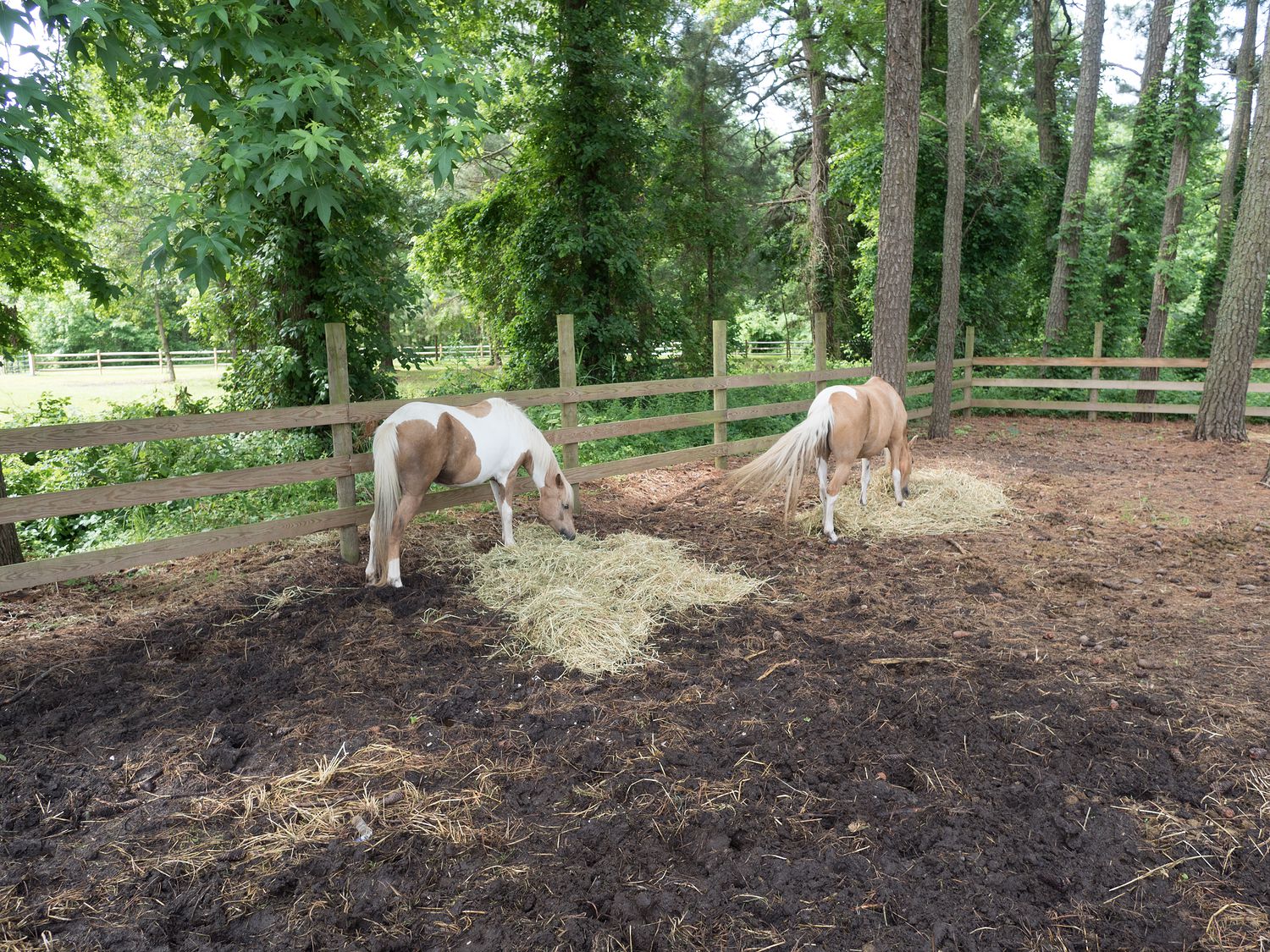
Regardless, we were able to get a national park stamp for the Assateague Island National Seashore, and Mark gathered a bit of sand for his new sand collection. With those in hand, we drove back over the Chincoteague and browsed around the gift shops there. It’s a really cute little town. A lot of their stuff is obviously pony-themed, from parks to ice-cream stands. Mark and I discussed renting a room on the island next time, so we can drive over to see the ponies on Assateague while Ripley naps back in our hotel in Chincoteague.
One of the gift shops had tamed Chincoteague Ponies out front, and a woman was giving rides to small children. It was pretty adorable, and the ponies are quite pretty. Pinto coloration seems very common. The little palomino pintos in the photo above were especially attractive. They were also some of the only ponies we got to see, since we couldn’t really tour Assateague. We did see feral ponies way off in the distance, and they were in fact behind that copse of trees in the featured image at the top. Unfortunately we don’t carry a zoom lens, so we don’t have any pony pictures to show for it.
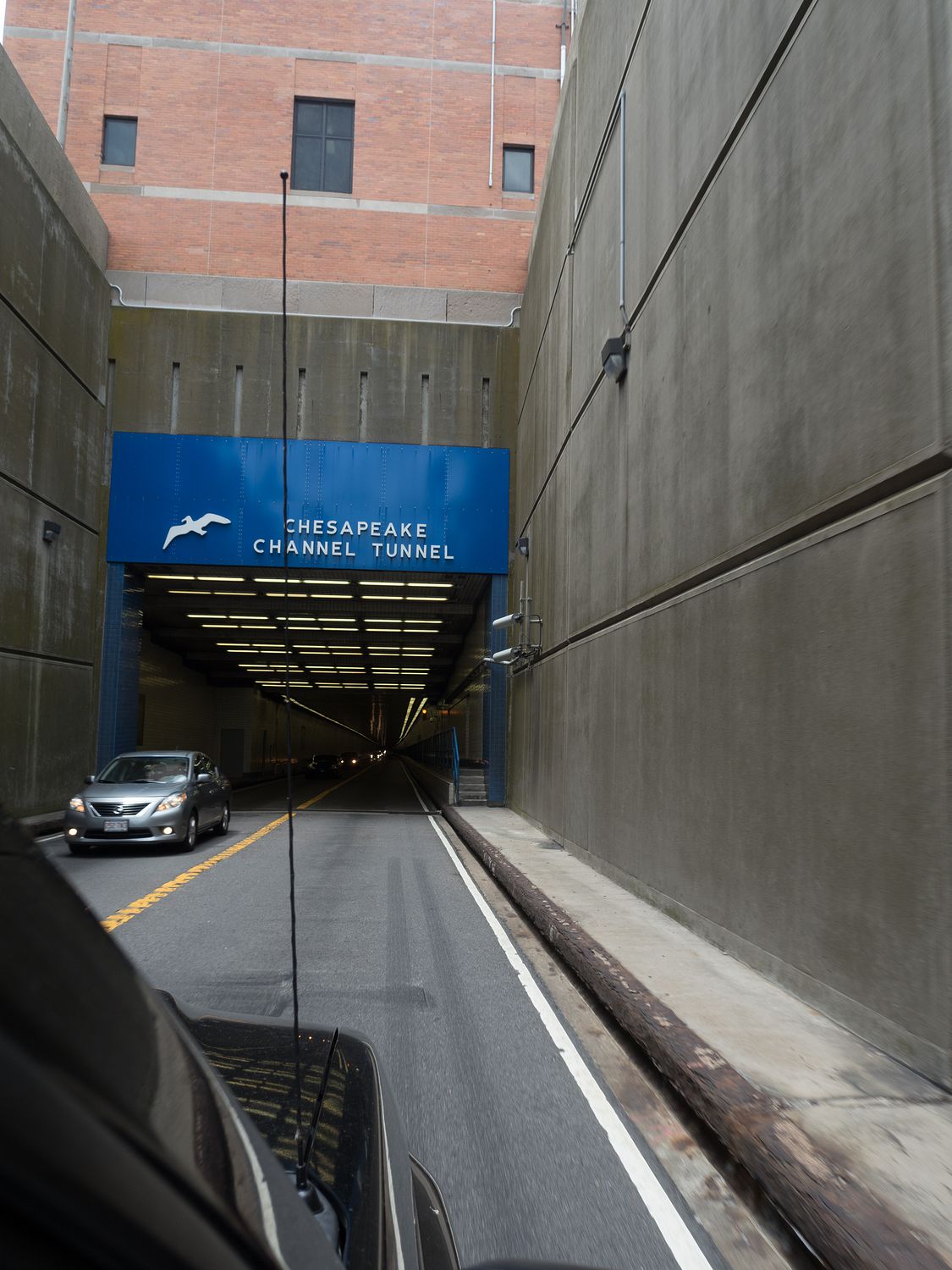
With our adventure curtailed, we hopped back on the road and drove down the rest of the little peninsula there in Virginia to cross back into the main part of the state. We stopped along the way for a grilled cheese, because we had to eat around noon or so, or we’d be eating too close to our dinner appointment with Mark’s friend. It wasn’t the worst sandwich I’ve had, but it wasn’t a great grilled cheese. That’s what we get for buying food from a gas station restaurant. We haven’t had to do that since Alaska.
To get back across to the mainland, you have to cross the Chesapeake Bay Bridge–Tunnel. It is a 23-mile span covered by several bridges and large tunnels beneath the water. From what I understand, only 10 bridge-tunnel systems like it exist in the world. It cost $15 to cross, but we’d been planning for $13. All of the signs say $13, but it turns out that it costs two dollars more on the weekends. I guess Friday counts. In any event, with all of the toll roads we’d been crossing, we were down to $14 in cash, and we thought we had enough to cover the crossing. We were pretty surprised when the woman in the toll booth asked for 15, and we had to scramble through the car hunting for change to make the last dollar. That’s always a little embarrassing. It’s a neat crossing, though. I don’t know that I need to do it again, but I am glad that I saw it.
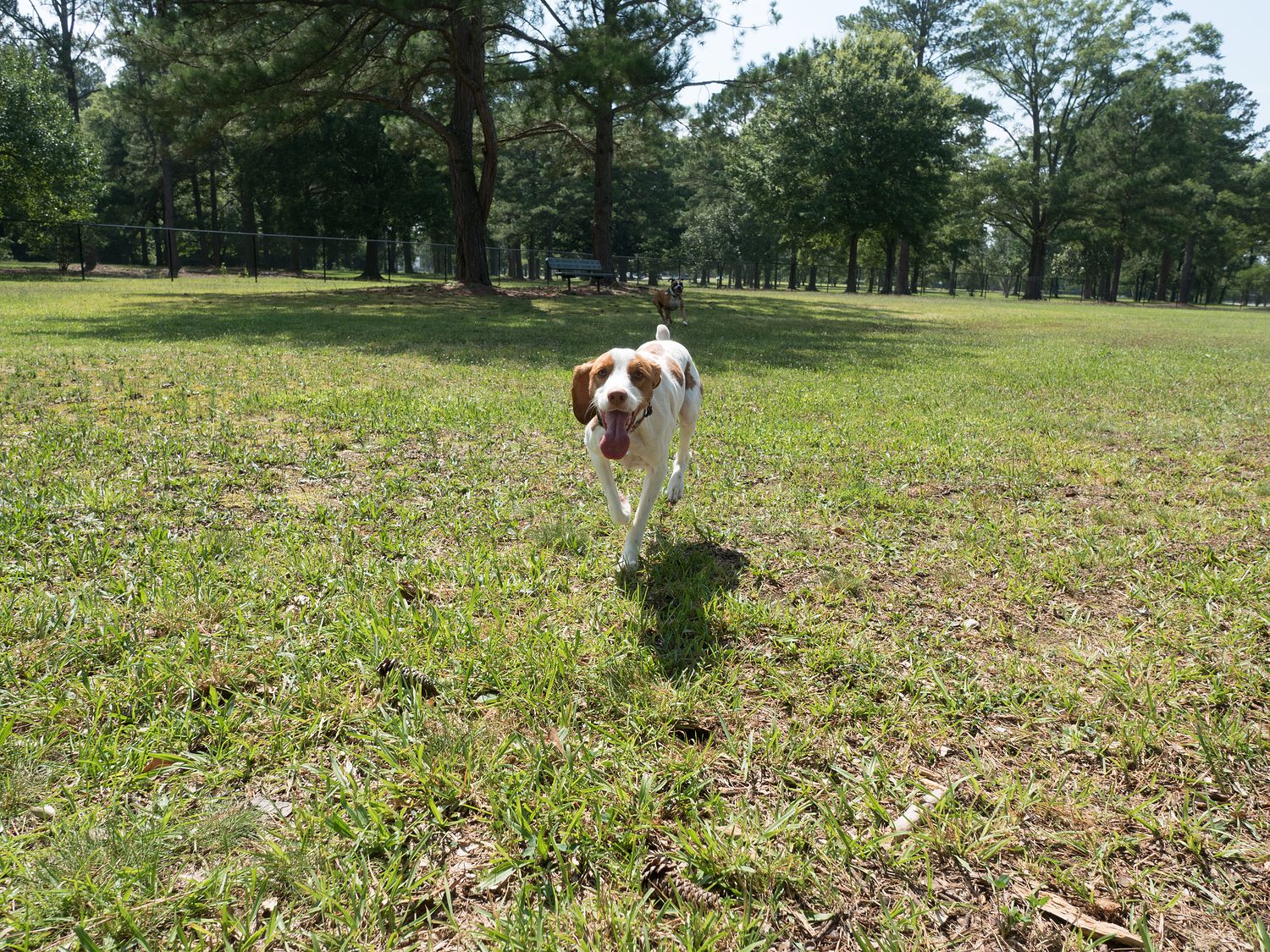
The afternoon wore on quickly, and before we knew it, it was after 4pm. Since we were relatively close to Durham, and we knew Ripley would need to be locked up for the evening, we stopped at a dog park in Rocky Mount to let the baby run off some energy. Only two other dogs were in the park, but Ripley was terrified of both of them, as is her wont. She still had a blast tearing around the park in rapid, slightly crazed, circles. We have come to call this behavior “having the zoomies.” She did it a lot more when she was a baby. She had plenty of room for it; Best Friend’s Dog Park is massive. It was easily three-times the size of our park in Denton. It was very hot, too, so we were glad for the large shade trees there. It’s quite a nice park.
With our now-exhausted kid loaded back into the car, we drove on to our hotel in Durham. It wasn’t a bad place at all, and we had plenty of space. Our hotel room looked oddly like a conference room, since it had a table that stretched all the way down one of its walls, and the TV was mounted over the table. It was nearly 5:30 by this point, so we fed little Ripley her dinner and headed out to meet Mark’s friend Jim for dinner.
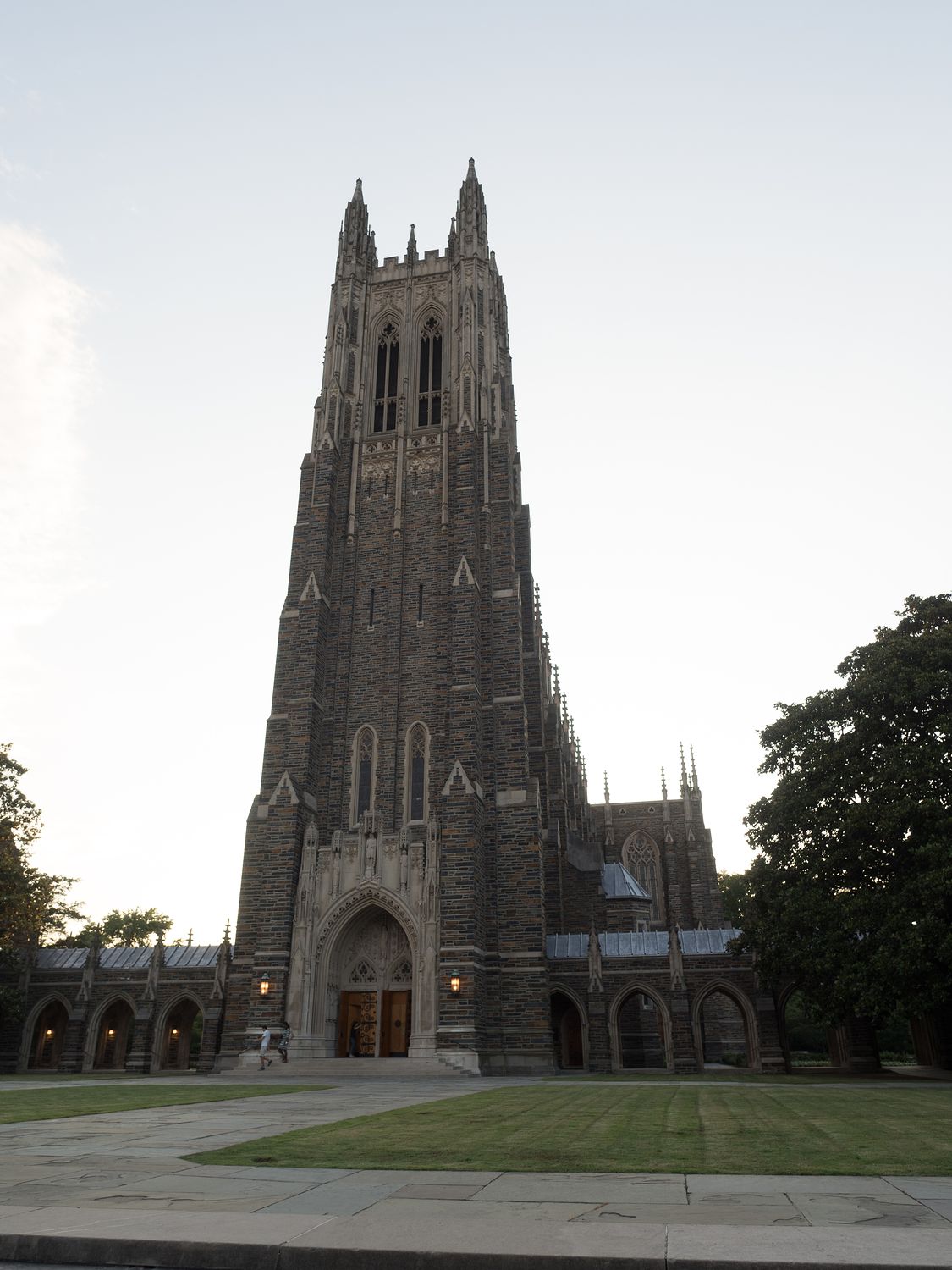
We ended up at a local ramen place in the downtown area, which Jim told us used to be pretty scary, before they started gentrifying it. It’s a little bit empty-feeling for a downtown, that’s for sure. It seems like the area is more of a work in progress. Our ramen was decent, and we were having a lot of fun chatting with Jim. He works for Duke University, so he offered to take us by for a brief tour. That sounded great, so we took our respective vehicles a few miles down the road to take a look at Duke.
Mark and I were both new to the place, and if you’ve seen movies or photos, they hardly do it justice. The campus is absolutely gorgeous. It is all done in the Collegiate Gothic style, which makes everything look like something out of the 12th century. Most of the buildings use the same interestingly-colored stone, although a few are made of brick in the same tones. The university is bizarrely devoid of signs, as apparently signs might ruin the place’s aesthetic. I can’t imagine how much they must spend to keep the place looking so beautiful.
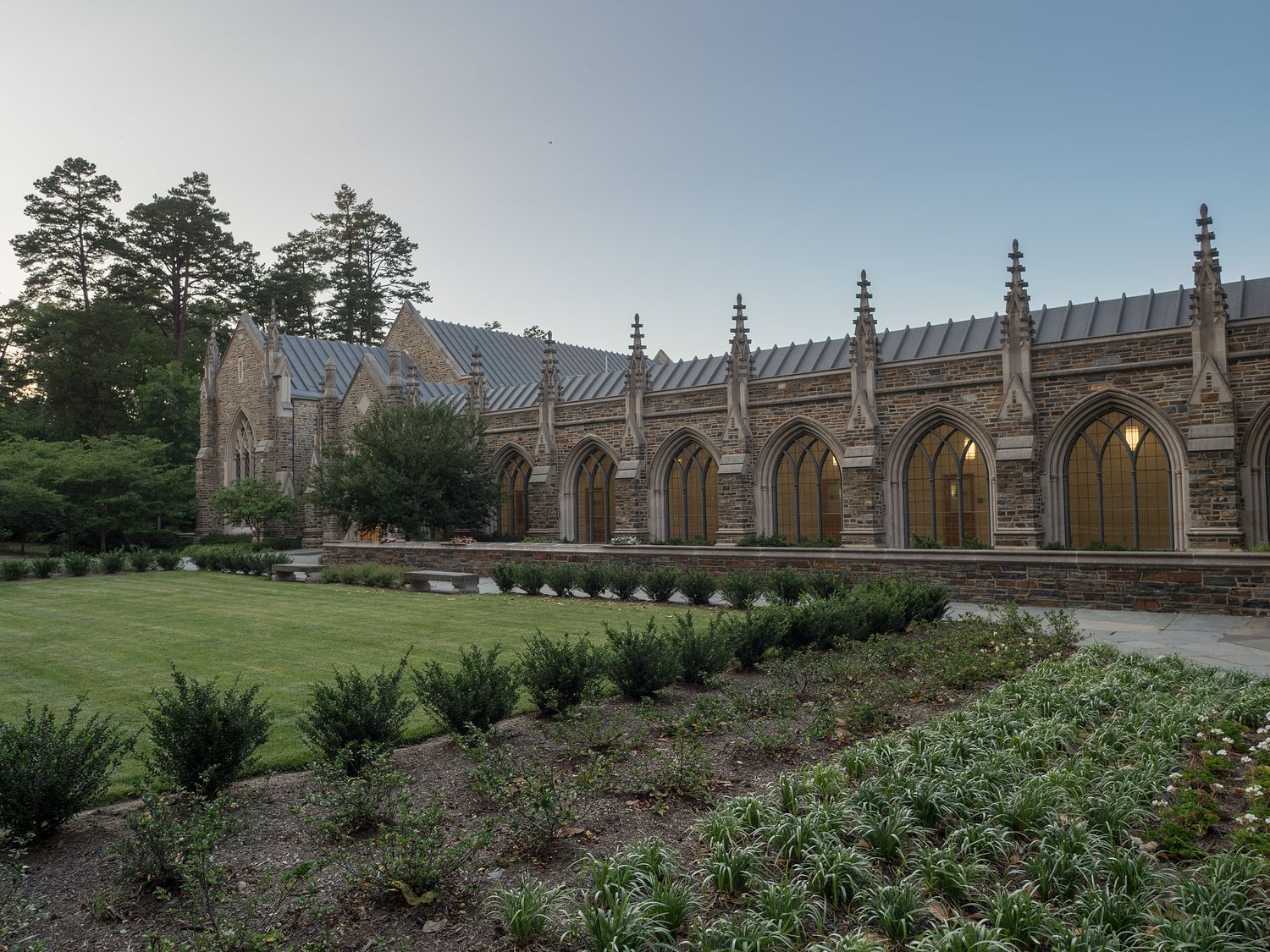
The “chapel,” which would more properly be called a cathedral, was closing just as we arrived, so we didn’t get to go inside. We did see inside of the library though, and it is a lovely building. The chapel is pretty spectacular from the outside, even still.
We took a turn through the Sarah P. Duke Gardens, as well. The gardens are quite impressive. The amount that place must spend on plants and people to maintain them just blows my mind. It looks like a miniature, landscaped forest. Don’t take miniature to mean it is a small garden, though. It is absolutely huge, just smaller than a real forest, I think. The fireflies and imported ducks really added to the ambiance. It was pretty warm though, despite the lateness of the hour.
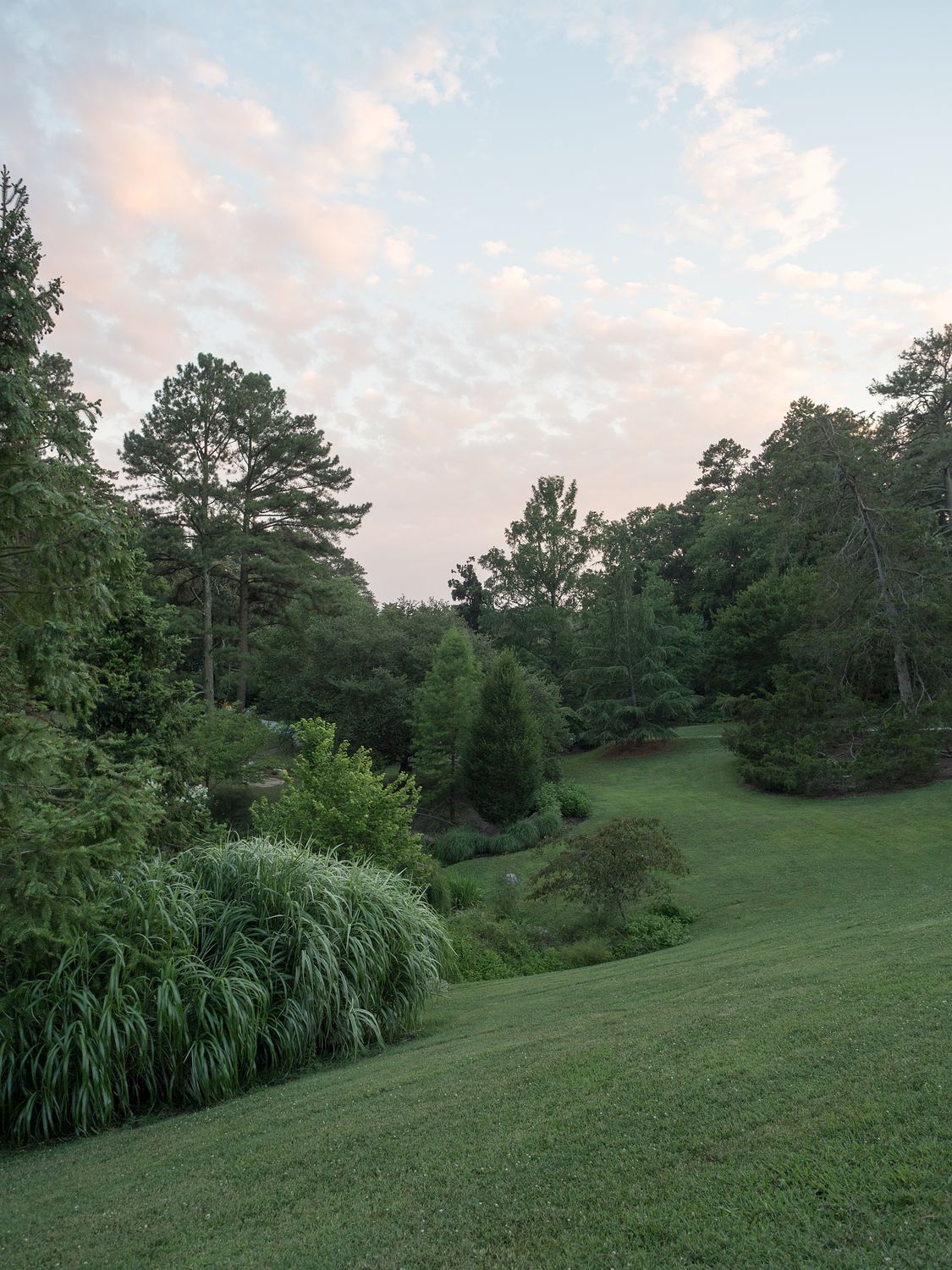
When we parted ways with Jim, we drove over to Whole Foods to pick up some cookies for dessert. Ramen never seems to stick with you, for some reason. Tomorrow we’re really going to start making our way home, so it’s going to be a really long day. We’re still running tomorrow morning, but it will be the last day we do on this trip.
– Trip Total : 3,100 miles –
